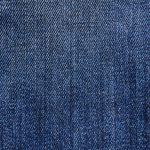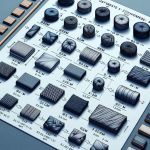If you’re serious about screen printing, choosing the right screen is crucial. The screen you use plays a crucial role in determining the quality of your print and the durability of your design. With so many different types of screens available, it can be difficult to know which one to choose.
In this article, we’ll take a closer look at the best screens for screen printing and help you make an informed decision. First, we’ll explore the different types of screens available and the pros and cons of each. You’ll learn about mesh count and thread diameter, and how they impact the clarity and sharpness of your design.
We’ll also discuss the advantages and disadvantages of aluminum, wooden, polyester, and hybrid screens. By the end of this article, you’ll have a clear understanding of which screen is best suited for your project, and how to ensure you get the best possible results. So whether you’re new to screen printing or a seasoned pro, read on to discover the best screens for screen printing.
Table of Contents
Understanding the Importance of Choosing the Right Screen
Choosing the right screen for screen printing is like selecting the perfect paintbrush for a masterpiece – it can make or break the final product. The screen you choose can have a significant impact on the quality of your print. This is because the screen is essentially the foundation of the print, and any imperfections in the screen will be transferred onto the final product.
One of the most important factors to consider when choosing a screen for screen printing is the mesh count. The mesh count refers to the number of threads per inch in the screen. A higher mesh count will result in a finer and more detailed print, while a lower mesh count will produce a thicker and more textured print. It’s important to choose the right mesh count for the design you’re printing to ensure that you achieve the desired level of detail.
Another factor to consider when choosing a screen is the tension. The tension refers to the tightness of the screen, which affects the amount of ink that can pass through the screen. A screen with low tension will allow more ink to pass through, resulting in a thicker print, while a screen with high tension will produce a more precise and detailed print. It’s important to choose a screen with the right tension for the design you’re printing to ensure that you achieve the desired level of ink coverage.
Mesh Count and Thread Diameter
When it comes to achieving high-quality prints, you want to make sure you’re using a mesh count and thread diameter that’s appropriate for your design. Mesh count refers to the number of threads per inch in the screen, while thread diameter is the thickness of the thread itself.
The higher the mesh count and the thinner the thread diameter, the more detail you can achieve in your print. However, this also means that less ink will go through the screen, so you may need to adjust your printing technique accordingly.
For fine details and small text, a higher mesh count and thinner thread diameter are ideal. A mesh count of at least 230 and a thread diameter of 80 microns or less is recommended.
However, for larger areas of solid color or bold designs, a lower mesh count and thicker thread diameter may be more suitable. A mesh count of around 110 to 160 and a thread diameter of 110 microns or more can help ensure that enough ink is pushed through the screen to create a vibrant print.
It’s important to note that choosing the right mesh count and thread diameter is just one factor in achieving high-quality screen prints. Other factors such as proper tension, stencil thickness, and ink viscosity also play a role.
By experimenting with different mesh counts and thread diameters, as well as fine-tuning your other techniques, you can find the perfect combination for your specific design and printing needs.
Aluminum Screens
Aluminum screens are a popular option for achieving precise and detailed screen prints due to their durability and resistance to warping. These screens are made from a lightweight yet sturdy material that can withstand the pressure of screen printing. They are also resistant to rust and corrosion, making them a long-lasting investment for your screen printing needs.
One of the benefits of using aluminum screens is that they can be reused multiple times without losing their shape or tension. This means that you can save money on screen replacements and focus on perfecting your printing technique. Additionally, aluminum screens are easy to clean and maintain, which is important for maintaining the quality of your prints.
When choosing an aluminum screen, it’s important to consider the mesh count and thread diameter that will best fit your printing needs. A higher mesh count will allow for more intricate details in your print, while a lower mesh count will result in a bolder and more opaque print. The thread diameter will also affect the amount of ink that can pass through the screen, so it’s important to choose a diameter that matches the thickness of your ink.
Overall, aluminum screens are a reliable option for achieving high-quality screen prints with precision and durability.
Wooden Screens
So, you’re curious about wooden screens for screen printing? Well, they have their advantages and disadvantages.
On one hand, they’re affordable and great for smaller projects. On the other hand, they may not last as long as aluminum screens and can warp or stretch over time.
Overall, if you’re working on a smaller scale and don’t mind occasional maintenance, wooden screens can be a great option for you.
Advantages and Disadvantages
One of the benefits of using mesh screens for screen printing is that they allow for detailed designs to be printed with precision. Unlike wooden screens, mesh screens have a smooth surface that can hold fine details in the design. This makes them ideal for printing logos, patterns, and even photographs. Additionally, mesh screens can be stretched to different tensions, which allows for greater control over ink application and thickness.
However, there are also some disadvantages to using mesh screens. For one, they tend to be more expensive than wooden screens. Additionally, mesh screens are more delicate and can easily tear or break if not handled properly. This means that they require more care and maintenance than wooden screens. Despite these drawbacks, many screen printers prefer to use mesh screens because of the superior quality of the prints they produce.
| Advantages | Disadvantages | ||
|---|---|---|---|
| Allow for detailed designs | More expensive than wooden screens | ||
| Smooth surface for fine details | More delicate and require more care | ||
| Can be stretched to different tensions | |||
| Greater control over ink application | |||
| Superior quality prints | However, they are not as environmentally friendly as wooden screens. |
Best Applications
You’ll want to consider the specific needs of your design when deciding which type of mesh screen to use for your project. For example, if your design has fine details, you’ll want to use a higher mesh count screen. A higher mesh count means there are more threads per inch, which creates a finer mesh and allows for more detail in your design.
On the other hand, if your design has larger and bolder elements, a lower mesh count screen may be more appropriate. Another factor to consider is the type of ink you’ll be using. Some inks work better on certain types of mesh screens.
For example, water-based inks tend to work best on mesh screens with a lower mesh count, while plastisol inks work better on higher mesh count screens. Additionally, the material you’ll be printing on can also affect your choice of mesh screen. Thicker materials may require a lower mesh count screen, while thinner materials can handle a higher mesh count screen.
By taking into account these various factors, you can choose the best mesh screen for your specific project and achieve the best possible results.
Polyester Screens
Polyester screens are a popular choice for screen printing due to their durability and ability to hold fine details. These screens are made from polyester mesh and are known for their strength and resistance to chemicals. They are ideal for printing on flat surfaces and can be used for both water-based and solvent-based inks.
One of the benefits of polyester screens is their ability to hold fine details. This makes them a great choice for printing designs with intricate patterns or small text. The mesh count of the screen determines how fine the details can be. A higher mesh count will result in finer details being printed, while a lower mesh count is better for printing larger areas of color.
Polyester screens are also highly durable, making them a great investment for screen printers. They can withstand repeated use and exposure to chemicals, making them ideal for long print runs. Additionally, polyester screens are easy to clean and maintain, which helps to prolong their lifespan.
Overall, if you’re looking for a reliable and versatile screen for your screen printing needs, polyester screens are definitely worth considering.
Hybrid Screens
If you’re looking to expand your screen printing options, consider trying out hybrid screens made from a combination of different materials. These screens offer the best of both worlds, combining the durability and longevity of polyester screens with the crisp detail and high resolution of mesh screens. By using a hybrid screen, you can achieve finer details and more vibrant colors in your prints.
One popular type of hybrid screen is the polyester/mesh hybrid. This type of screen features a mesh fabric on top of a polyester base, allowing for the best of both worlds. The mesh fabric provides the sharp detail and high resolution needed for intricate designs, while the polyester base ensures durability and longevity, allowing the screen to withstand multiple uses and washes.
Another type of hybrid screen is the monofilament/silk hybrid. This screen combines a monofilament fabric on top of a silk base, providing a smooth surface for printing with excellent ink penetration. This type of screen is ideal for printing on softer fabrics, such as cotton, and can produce a softer hand feel in the final print. Overall, hybrid screens offer a versatile and effective option for screen printing, allowing you to achieve high-quality prints with ease.
| Hybrid Screen Type | Features | Best for |
|---|---|---|
| Polyester/Mesh Hybrid | Mesh fabric on top of a polyester base | Intricate designs and durability |
| Monofilament/Silk Hybrid | Monofilament fabric on top of a silk base | Printing on softer fabrics and producing a softer hand feel |
| Nylon/Polyester Hybrid | Nylon threads woven into a polyester base | Printing on rough surfaces and producing a matte finish |
Choosing the Best Screen for Your Project
When choosing the best screen for your screen printing project, there are a few key points to consider.
First, your budget is an important consideration, as screens can range in price.
Secondly, the type of ink you plan to use will also affect your choice of screen, as some screens are better suited to certain types of ink.
Finally, the type of surface you will be printing on should also be taken into account, as different screens may be better suited to different surfaces.
Make sure to keep these factors in mind when selecting the right screen for your project.
Budget Considerations
Affordability is a key factor to keep in mind while selecting screens for screen printing. When considering your budget, it’s important to remember that cheaper screens may not always be the best option. While they may save you money upfront, they may wear out more quickly and require more frequent replacements, ultimately costing you more in the long run.
On the other hand, investing in higher quality screens may cost more initially, but they’ll likely last longer and provide better results. It’s important to strike a balance between cost and quality, and to consider the specific needs of your project.
By doing your research and comparing prices, you can find a screen that fits both your budget and your printing needs.
Type of Ink Used
Let’s talk about the type of ink you’ll be using for your screen printing project. There are two main types of ink that are commonly used in screen printing: water-based and plastisol.
Water-based ink is ideal for printing on light-colored fabrics and provides a softer feel to the printed design. It can also be used on dark-colored fabrics, but it requires an additional step of pre-treating the fabric to help the ink adhere properly.
Plastisol ink, on the other hand, is a thicker ink that is ideal for printing on dark-colored fabrics. It provides a more vibrant and opaque print, but it can also feel heavy and stiff on the fabric.
When choosing your screen printing screens, it’s important to consider the type of ink you’ll be using. Water-based ink requires a finer mesh screen, typically between 110-160 mesh, to allow the ink to pass through properly and create a crisp print.
Plastisol ink, on the other hand, requires a coarser mesh screen, typically between 156-230 mesh, to allow the ink to sit on top of the fabric and create a more opaque print.
By choosing the appropriate screen for your ink, you can ensure that your screen printing project turns out as intended and your designs look their best.
Type of Surface Being Printed On
The type of surface being printed on can greatly affect the final result of your design, so it’s important to choose the appropriate ink and mesh screen. Different surfaces require different types of ink and screens in order to achieve the best results. For example, printing on cotton fabrics requires a different type of screen than printing on plastic or metal surfaces.
When choosing a screen for a particular surface, it’s important to consider the mesh count and thread diameter of the screen. A higher mesh count means that the screen has more threads per inch, which provides better detail in the print. However, a higher mesh count also means that the ink will be thinner and less opaque. On the other hand, a lower mesh count will result in a thicker and more opaque ink, but with less detail. In addition, the thread diameter also affects the amount of ink deposited on the surface, with a thinner thread resulting in a lighter ink deposit.
To illustrate this point, here is a table showing the recommended mesh count and thread diameter for different types of surfaces:
| Surface | Mesh Count | Thread Diameter |
|---|---|---|
| Cotton | 110-156 | 35-40 microns |
| Plastic | 86-110 | 45-55 microns |
| Metal | 156-230 | 30-35 microns |
By selecting the appropriate mesh count and thread diameter for the surface being printed on, you can ensure that your design looks its best and achieves the desired effect.
- Creating Custom Fabric Prints at Home - July 18, 2024
- Advanced Sewing Techniques for Home Decor Enthusiasts - July 18, 2024
- Beginner's Guide to DIY Fabric Projects - July 18, 2024







